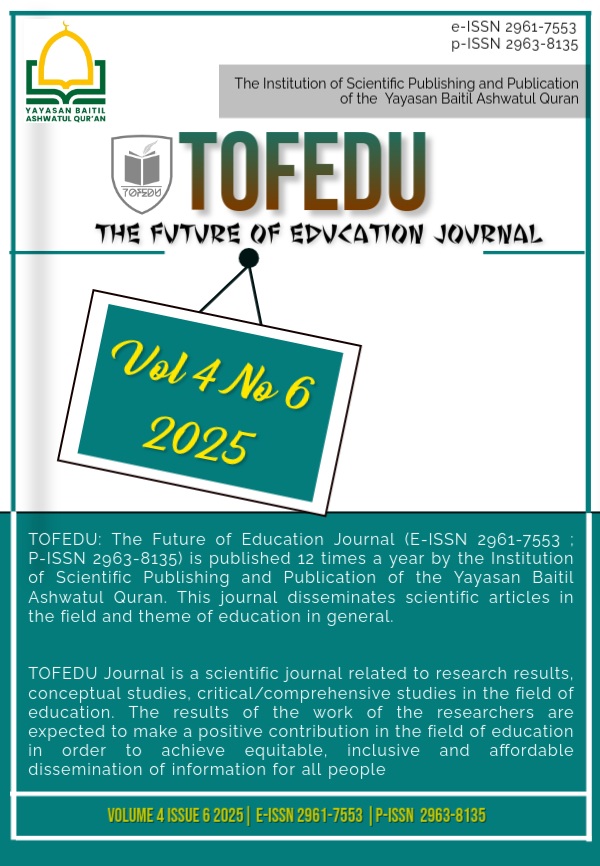The Development of Local Wisdom-Based E-LKPD Supported by Liveworksheets in Pancasila Education on Cultural Diversity in Indonesia for Third Grade Students at SDN 01 Tiumang
Main Article Content
Abstract
This study is motivated by the observation that the available learning materials used in the classroom consist of teacher’s handbooks and Student Worksheets (LKS). However, the available LKS are less engaging for students due to their lack of color or the fact that they are only in black and white, causing students to feel bored while working on them. In addition, the school does not have electronic student worksheets (E-LKPD). To address this issue, it is necessary to develop a learning material in the form of electronic student worksheets (E-LKPD). This research is a development study using the ADDIE development model, which consists of several stages: analysis, design, development, implementation, and evaluation. The analysis stage includes content analysis, needs analysis of students, and analysis of students’ characteristics. The design stage involves planning the E-LKPD, including designing instruments and frameworks. In the development stage, a validation test was conducted. The implementation stage involves assessing practicality and effectiveness. The evaluation stage takes place at every step, including analysis, design, development, and implementation. The validation results of the E-LKPD, based on a test conducted by three experts, showed an average score of 97.7% for language validation, 98% for graphic design validation, and 96.6% for material validation, all of which fall under the "valid" category, meaning that the E-LKPD is appropriate in terms of language, media, and learning material. The practicality test yielded an average score of 100%, categorized as very practical, meaning the E-LKPD is easy to use in the learning process. The effectiveness test showed a score of 90.1%, categorized as highly effective, indicating that the E-LKPD can enhance students' learning outcomes.
Article Details

This work is licensed under a Creative Commons Attribution 4.0 International License.
